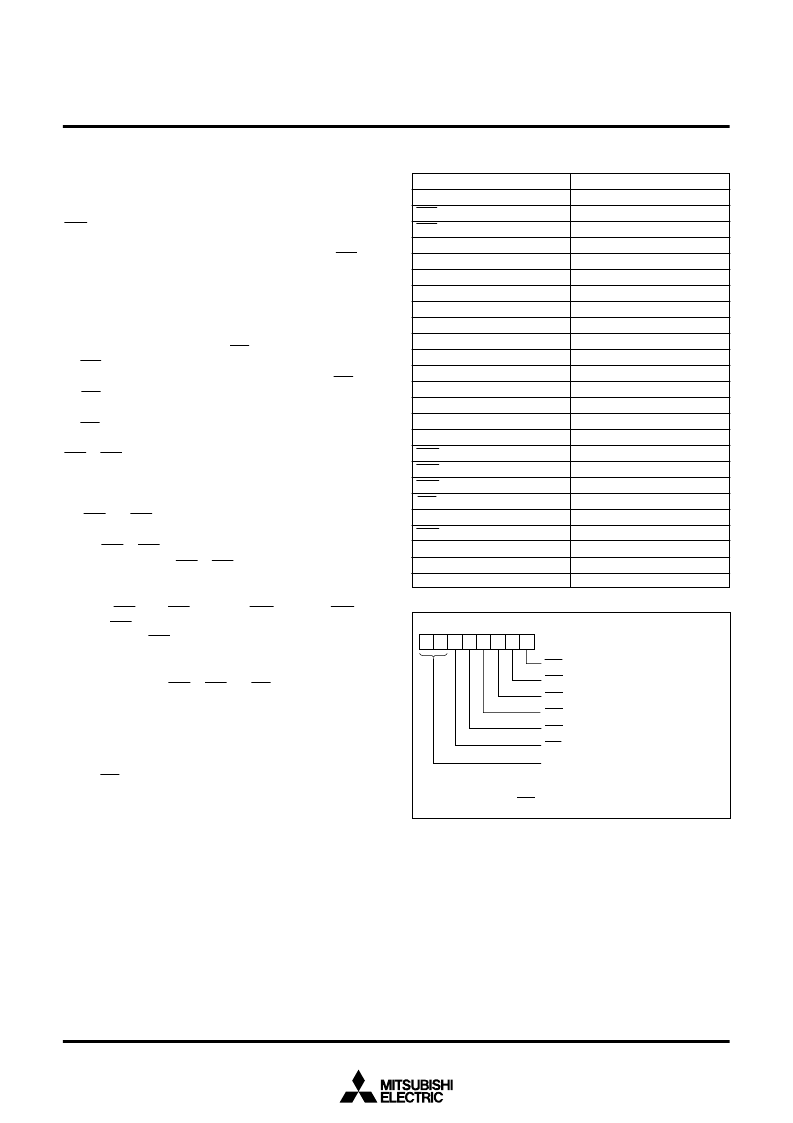- 您現(xiàn)在的位置:買賣IC網(wǎng) > PDF目錄370849 > M37902FCCHP (Mitsubishi Electric Corporation) SINGLE-CHIP 16-BIT CMOS MICROCOMPUTER PDF資料下載
參數(shù)資料
| 型號(hào): | M37902FCCHP |
| 廠商: | Mitsubishi Electric Corporation |
| 英文描述: | SINGLE-CHIP 16-BIT CMOS MICROCOMPUTER |
| 中文描述: | 單片16位CMOS微機(jī) |
| 文件頁(yè)數(shù): | 46/143頁(yè) |
| 文件大?。?/td> | 1463K |
| 代理商: | M37902FCCHP |
第1頁(yè)第2頁(yè)第3頁(yè)第4頁(yè)第5頁(yè)第6頁(yè)第7頁(yè)第8頁(yè)第9頁(yè)第10頁(yè)第11頁(yè)第12頁(yè)第13頁(yè)第14頁(yè)第15頁(yè)第16頁(yè)第17頁(yè)第18頁(yè)第19頁(yè)第20頁(yè)第21頁(yè)第22頁(yè)第23頁(yè)第24頁(yè)第25頁(yè)第26頁(yè)第27頁(yè)第28頁(yè)第29頁(yè)第30頁(yè)第31頁(yè)第32頁(yè)第33頁(yè)第34頁(yè)第35頁(yè)第36頁(yè)第37頁(yè)第38頁(yè)第39頁(yè)第40頁(yè)第41頁(yè)第42頁(yè)第43頁(yè)第44頁(yè)第45頁(yè)當(dāng)前第46頁(yè)第47頁(yè)第48頁(yè)第49頁(yè)第50頁(yè)第51頁(yè)第52頁(yè)第53頁(yè)第54頁(yè)第55頁(yè)第56頁(yè)第57頁(yè)第58頁(yè)第59頁(yè)第60頁(yè)第61頁(yè)第62頁(yè)第63頁(yè)第64頁(yè)第65頁(yè)第66頁(yè)第67頁(yè)第68頁(yè)第69頁(yè)第70頁(yè)第71頁(yè)第72頁(yè)第73頁(yè)第74頁(yè)第75頁(yè)第76頁(yè)第77頁(yè)第78頁(yè)第79頁(yè)第80頁(yè)第81頁(yè)第82頁(yè)第83頁(yè)第84頁(yè)第85頁(yè)第86頁(yè)第87頁(yè)第88頁(yè)第89頁(yè)第90頁(yè)第91頁(yè)第92頁(yè)第93頁(yè)第94頁(yè)第95頁(yè)第96頁(yè)第97頁(yè)第98頁(yè)第99頁(yè)第100頁(yè)第101頁(yè)第102頁(yè)第103頁(yè)第104頁(yè)第105頁(yè)第106頁(yè)第107頁(yè)第108頁(yè)第109頁(yè)第110頁(yè)第111頁(yè)第112頁(yè)第113頁(yè)第114頁(yè)第115頁(yè)第116頁(yè)第117頁(yè)第118頁(yè)第119頁(yè)第120頁(yè)第121頁(yè)第122頁(yè)第123頁(yè)第124頁(yè)第125頁(yè)第126頁(yè)第127頁(yè)第128頁(yè)第129頁(yè)第130頁(yè)第131頁(yè)第132頁(yè)第133頁(yè)第134頁(yè)第135頁(yè)第136頁(yè)第137頁(yè)第138頁(yè)第139頁(yè)第140頁(yè)第141頁(yè)第142頁(yè)第143頁(yè)

M37902FCCHP, M37902FGCHP, M37902FJCHP
46
MITSUBISHI MICROCOMPUTERS
SINGLE-CHIP 16-BIT CMOS MICROCOMPUTER
INTERRUPTS
Table 8 shows the interrupt sources and the corresponding interrupt
vector addresses. Reset is also handled as a type of interrupt in this
section, too.
DBC and BRK instruction are interrupts used only for debugging.
Therefore, do not use these interrupts.
Interrupts other than reset, watchdog timer, zero divide, NMI, and
address matching detection all have interrupt control registers. Table
9 shows the addresses of the interrupt control registers and Figure
35 shows the bit configuration of the interrupt control register.
The interrupt request bit is automatically cleared by the hardware
during reset or when processing an interrupt. Also, interrupt request
bits other than watchdog timer and NMI can be cleared by software.
An NMI interrupt request is a non-maskable interrupt by an external
input and is accepted at the falling edge of an input to pin NMI. Also,
pin NMI has the pullup function. For more details, refer to the section
on input/output pins.
An INT
i
(i = 0 to 4) interrupt request is generated by an external in-
put.
INT
0
to INT
2
are external interrupts; whether to cause an interrupt at
the input level (level sense) or at the edge (edge sense) can be se-
lected with the level/edge select bit. Furthermore, the polarity of the
interrupt input can be selected with the polarity select bit.
For INT
3
and INT
4,
the interrupt signal’s polarity can be change by
the polarity select bit. (This is valid only in the edge sense.)
By pins INT
2
to INT
4
select bits (bits 4 to 6 at address 94
16
; see Fig-
ure 40.), pin position of INT
2
to INT
4
can be changed.
When using the following pins as external interrupt input pins, clear
the direction registers of the corresponding multiplexed ports to “0”:
pins P6
2
/INT
0
, P6
3
/INT
1
, P6
4
(P7
7
)/INT
2
, P8
0
(P7
4
)/INT
3
, and
P8
4
(P7
5
)/INT
4
.
Furthermore, the INT
3
interrupt can function as the key input inter-
rupt. For details, refer to the section on the key input interrupt.
When the external interrupt input read register (address 95
16
) is read
out, the status of pins INT
0
to INT
4
and NMI can directly be read.
Timer and UART interrupts are described in the respective section.
The priority of interrupts when multiple interrupt requests are caused
simultaneously is partially fixed by hardware, but, it can also be ad-
justed by software as shown in Figure 36.
The hardware priority is fixed as the following:
reset > NMI > watchdog timer > other interrupts
Interrupts
Address matching detection interrupt
INT
4
external interrupt
INT
3
external interrupt
A-D conversion
UART1 transmit
UART1 receive
UART0 transmit
UART0 receive
Timer B2
Timer B1
Timer B0
Timer A4
Timer A3
Timer A2
Timer A1
Timer A0
INT
2
external interrupt
INT
1
external interrupt
INT
0
external interrupt
NMI external interrupt
Watchdog timer
DBC (Do not select.)
Break instruction (Do not select.)
Zero divide
Reset
Table 8. Interrupt sources and interrupt vector addresses
Vector addresses
00FFCA
16
00FFCB
16
00FFD0
16
00FFD1
16
00FFD2
16
00FFD3
16
00FFD4
16
00FFD6
16
00FFD8
16
00FFDA
16
00FFDC
16
00FFDE
16
00FFE0
16
00FFE2
16
00FFE4
16
00FFE6
16
00FFE8
16
00FFEA
16
00FFEC
16
00FFEE
16
00FFF0
16
00FFF2
16
00FFF4
16
00FFF6
16
00FFF8
16
00FFFA
16
00FFFC
16
00FFFE
16
00FFD5
16
00FFD7
16
00FFD9
16
00FFDB
16
00FFDD
16
00FFDF
16
00FFE1
16
00FFE3
16
00FFE5
16
00FFE7
16
00FFE9
16
00FFEB
16
00FFED
16
00FFEF
16
00FFF1
16
00FFF3
16
00FFF5
16
00FFF7
16
00FFF9
16
00FFFB
16
00FFFD
16
00FFFF
16
Fig. 34 Bit configuration of external interrupt input read register
7
6
5
4
3
2
1
0
Note:
When the key input interrupt select bit (bit 0 at address 94
16
) =
“
1
”
,
the status of pin INT
3
cannot be read out.
INT
0
read bit
INT
1
read bit
INT
2
read bit
INT
3
read bit
(Note)
INT
4
read bit
NMI read bit
Undefined at read.
External interrupt input read register
Address
95
16
相關(guān)PDF資料 |
PDF描述 |
|---|---|
| M37902FGCHP | DIODE SCHOTTKY DUAL COMMON-ANODE 25V 150mW 0.32V-vf 200mA-IFM 1mA-IF 2uA-IR SOT-523 3K/REEL |
| M37902FJCHP | SINGLE-CHIP 16-BIT CMOS MICROCOMPUTER |
| M37905F8CFP | 16-BIT CMOS MICROCOMPUTER |
| M37905F8CSP | 16-BIT CMOS MICROCOMPUTER |
| M37905M4C | DIODE SCHOTTKY DUAL COMMON-ANODE 25V 200mW 0.32V-vf 200mA-IFM 1mA-IF 2uA-IR SOT-323 3K/REEL |
相關(guān)代理商/技術(shù)參數(shù) |
參數(shù)描述 |
|---|---|
| M37902FGCGP | 制造商:MITSUBISHI 制造商全稱:Mitsubishi Electric Semiconductor 功能描述:SINGLE-CHIP 16-BIT CMOS MICROCOMPUTER |
| M37902FGCHP | 制造商:MITSUBISHI 制造商全稱:Mitsubishi Electric Semiconductor 功能描述:SINGLE-CHIP 16-BIT CMOS MICROCOMPUTER |
| M37902FJCHP | 制造商:MITSUBISHI 制造商全稱:Mitsubishi Electric Semiconductor 功能描述:SINGLE-CHIP 16-BIT CMOS MICROCOMPUTER |
| M37903S4CHP | 制造商:RENESAS 制造商全稱:Renesas Technology Corp 功能描述:16-BIT CMOS MICROCOMPUTER |
| M37905F8CFP | 制造商:MITSUBISHI 制造商全稱:Mitsubishi Electric Semiconductor 功能描述:16-BIT CMOS MICROCOMPUTER |
發(fā)布緊急采購(gòu),3分鐘左右您將得到回復(fù)。